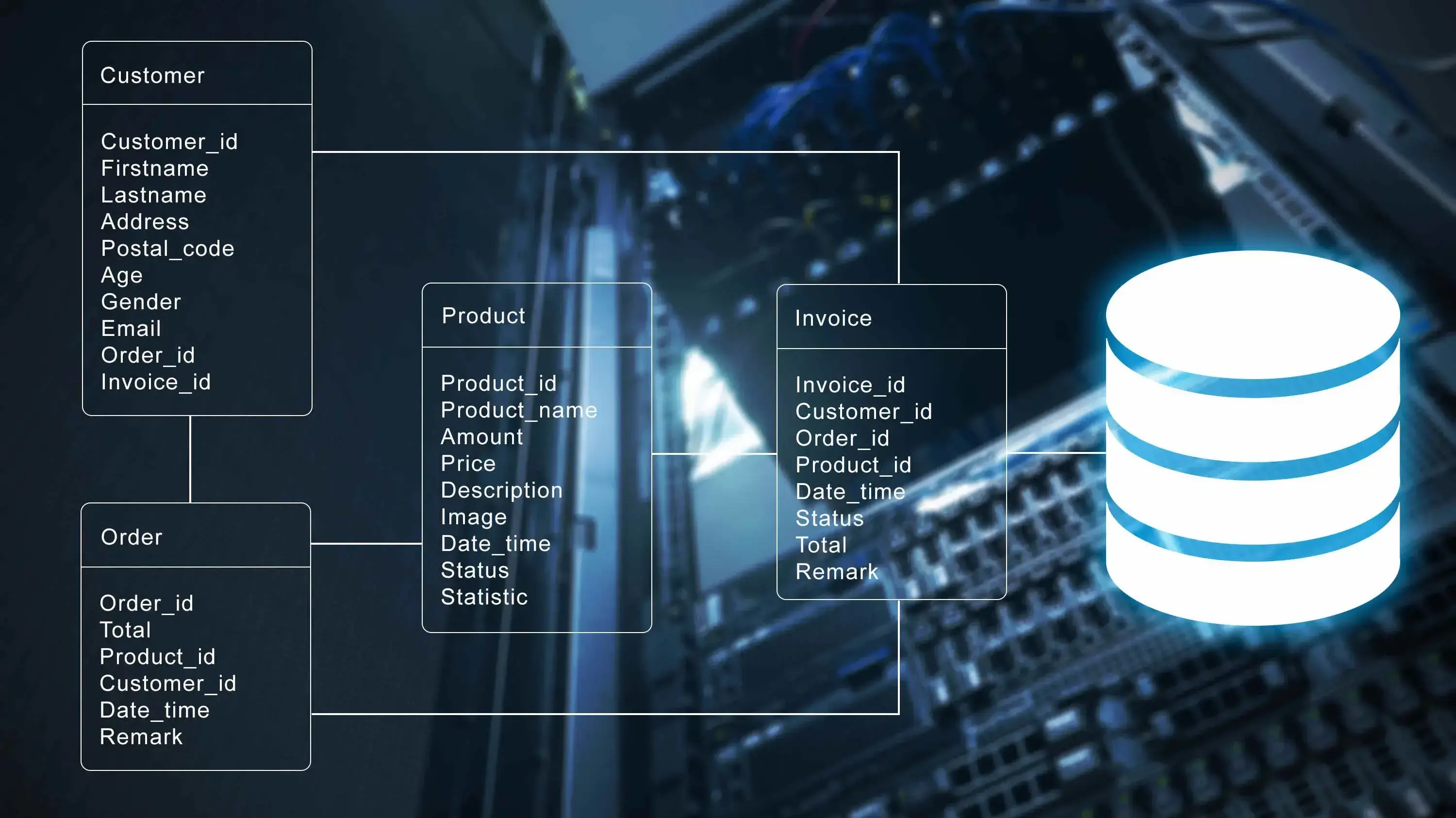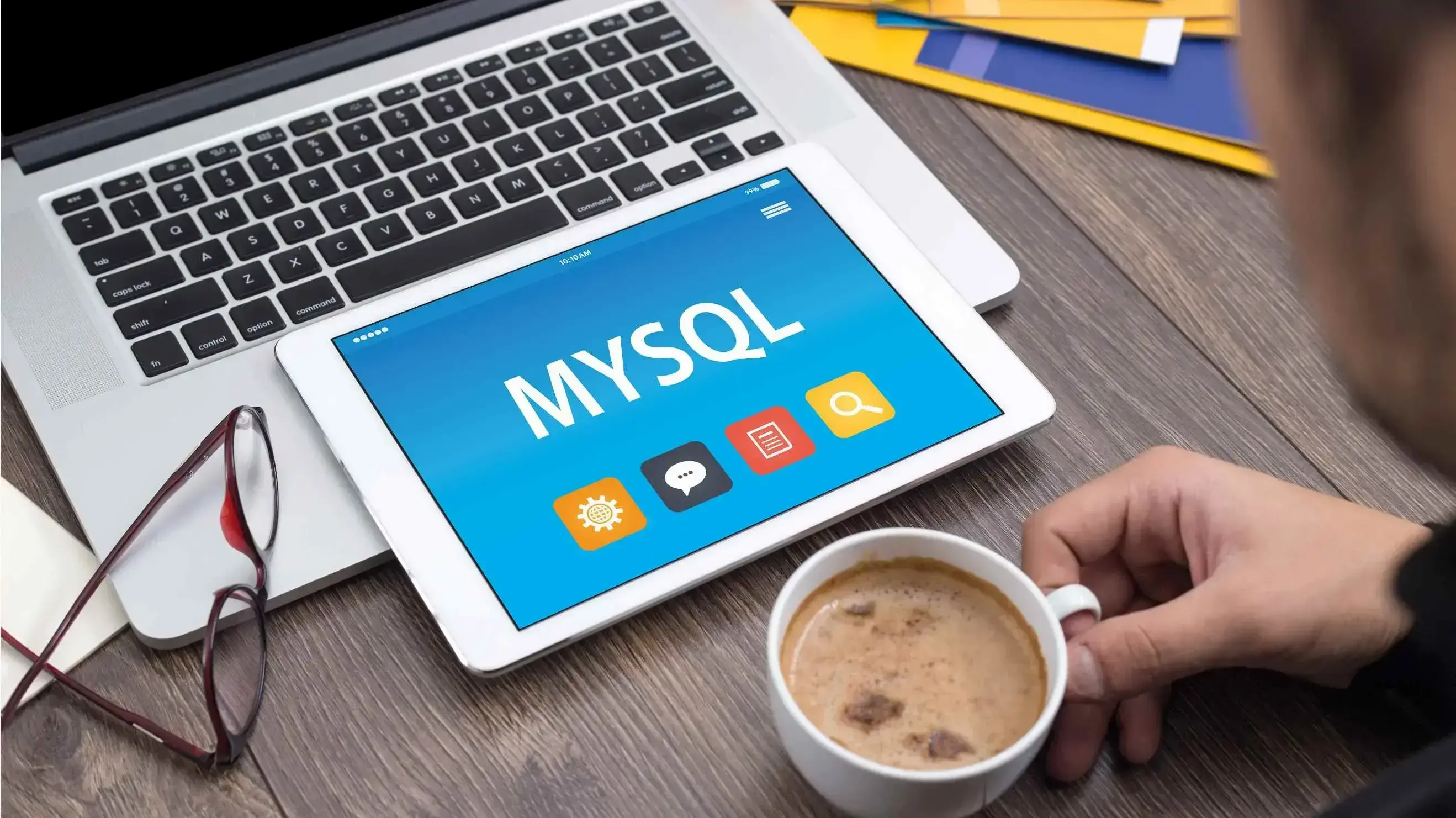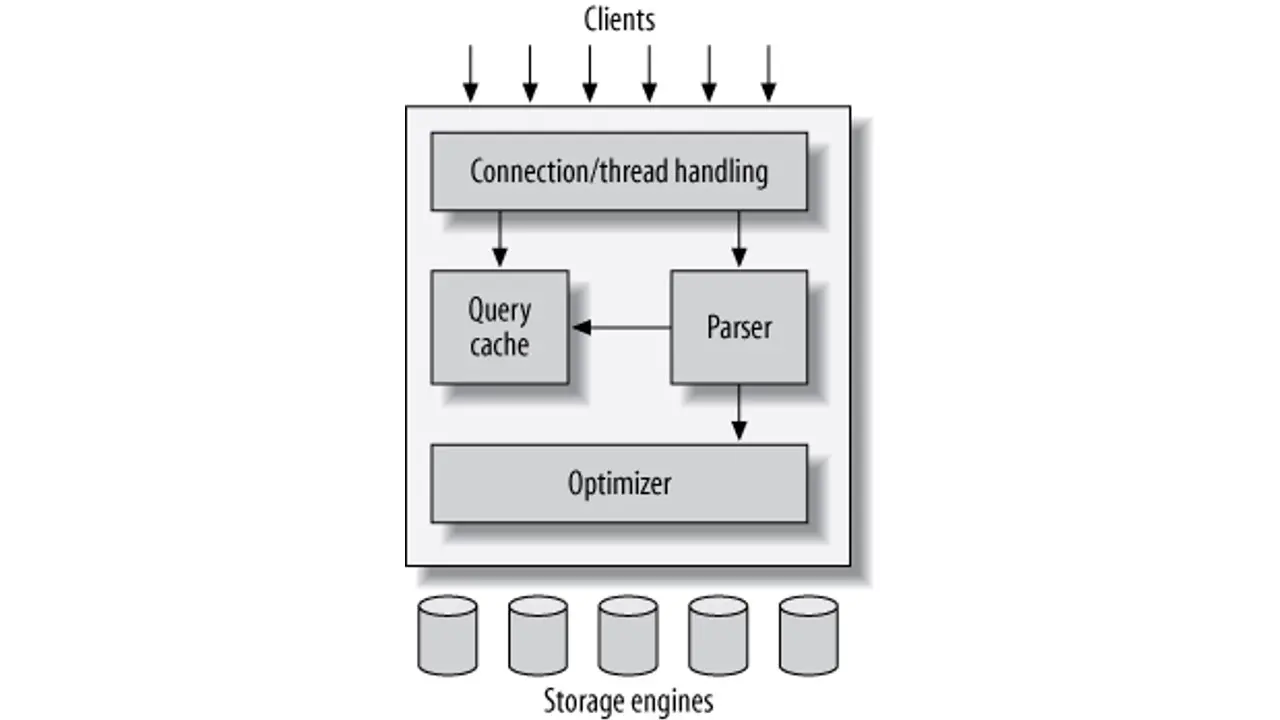In today’s world, the collection of data is made possible by databases; data is stored and retrieved as needed, whether you are conducting online transactions or surfing on Netflix. There must be data in order for a database to be useful. So, what exactly is data?
Data is made up of pieces that fit together to tell a story, much like a puzzle. Examples of data include words, numbers, pictures, and symbols. To keep everything organized when we have a lot of data, we need a separate space.
Databases are useful in this circumstance! In that they enable us to quickly locate, edit, and retrieve data whenever we need it, they resemble super-powered filing cabinets. Because they enable us to make sense of vast amounts of data, databases are essential to how computers operate.
The database management system manages a database. Database management systems are software packages used to create and manage databases; they help reduce data redundancy, i.e., repetition of data, and errors, and manage the integrity and confidentiality of data. Other advantages of a database management system include uniform data management and administration, data security, and data access and auditing.
There are various types of database systems, which are as follows:
Centralized Database
This type of database stores data in a centralized database system. Users can access stored data from different locations via applications.Distributed Database
In a distributed system, data is distributed amongst several database systems of an organization via communication links to help users get data easily. Examples of distributed databases are; Apache Cassandra, Hbase, etcRelational Database
This type of database uses Schema, which is a template to manage the data structure of the database. Think of the schema as an organizer that manages the relationship between data.Cloud Database
In a cloud-based database, data is stored virtually and executed on the cloud computing platform. Examples of cloud databases are Amazon Web Services (AWS), Microsoft Azure, and Google cloud platform.Object-Oriented Database
Data is represented and stored using the object-based data model approach.Network Database
The network database follows the network data model, where multiple files can be linked to multiple owners providing multiple access paths to the data.NoSQL Database
This type of database is called a non-relational database. The collection of data is stored in a non-tabular model. In this case, users create and maintain a non-relational database.Hierarchical Database
This type of database stores data in the form of a parent, and child relationship nodes. Data is organized in a tree structure and is stored in form of records connected via links.
In this article, we’ll focus on only two types of databases: MongoDB (A non-relational database) and MySQL (a relational database), and also compare the two types for better understanding.
MongoDB Defined

MongoDB is a kind of database that enables us to manage a lot of data. As opposed to traditional databases, MongoDB stores data in "documents" rather than tables. It's a NoSQL database, so it differs from other databases in that regard. Anyone can use MongoDB for free because it is open-source. It was created in 2017, making it also fairly recent. MongoDB might be the answer if you need to manage and store a lot of data! So, what exactly is “NO SQL?”
“Not Only SQL,” referred to as "NoSQL," describes a particular kind of database that doesn't make use of SQL [Structured Query Language] as its main data access language. We occasionally have a lot of data, such as long texts or large images, that won't fit neatly into a table. In this case, a NoSQL database might be useful. It effectively organizes and stores all types of data, and if we have too much, we can spread it across several servers.
Although NoSQL databases frequently respond quickly, they might not always be as reliable or able to support transactions as other databases. This NoSQL database has large amounts of semi-structured or unstructured data that are frequently stored because of its ability to scale horizontally across multiple servers. Although NoSQL databases are frequently faster and more adaptable than SQL databases, they may not provide the same level of consistency and transaction support.
The “NoSQL” databases include:
Key-value store
They are designed to be quick and adaptable and store data as key-value pairs which be compared to a robust and quick data search engine. They excel at managing large amounts of data and traffic; two well-known examples are Redis and Amazon DynamoDB.Wide column-oriented database
These databases are great for storing and organizing large amounts of potentially changing data. Columns are used to store the data rather than rows as in a traditional database. As a result, they become extremely adaptable and capable of dealing with a diverse range of information. Examples of this type of database include HBase and Cassandra.Multimodal Data Base
These databases are helpful for storing all sorts of data – like documents. They perform similar tasks to search engines, handle data in a manner akin to documents, and have a structure similar to a map or diagram. They are very flexible and capable of handling a variety of data. A couple of well-known examples of this kind of database are ArangoDB and OrientDB.Graph Database
These databases are ideal if there is a lot of data connected in various ways; they function like a super-powered filing cabinet and use "nodes" and "edges" to store and organize the data, making it simple to find and comprehend. Neo4j and TigerGraph are a couple of examples of this kind of database.Document Database
These databases are ideal if you have a lot of data that doesn't fit into standard rows and columns. Semi-structured databases store data in the form of documents that resemble JSON. These documents are very adaptable and simple to use because they resemble lists or dictionaries in appearance.Search Engines
Multiple texts are stored and retrieved with great ease using these databases because the search-optimized databases are designed to store and query large amounts of text data. You can type a few keywords in the search function, and it will return all relevant results. The two best-known examples of this kind of database are Elasticsearch and Apache Solr.
Since MongoDB is a document database, tables, rows, and columns are not necessary. Instead, data is stored in a document using the JSON (JavaScript Object Notation) format, which is object-based and structured as an object with key-value pairs.
{
“key”: “value”
}
This is what JSON data would look like:
{
“_id”: 1,
“firstName”: ”Jess”,
“lastName”: ”Agorye”,
“age”: 28,
“phone”: [“080”,”090”]
}
A single document can store multiple pieces of data for a single record using the JSON format. Instead of being divided up, all the user- or client-related information is bound together. Although documents are stored on the server in BISON (Binary JSON), an extension of JSON, they are worked with in MongoDB in JSON format.
Features of MongoDB
The outstanding scalability, availability, and performance of MongoDB are well known, and some of the key features are;
- Flexible Schema Design
- General purpose database
- Scalability and Load balancing
- Aggregation framework
- Security Features
- Native Replication
- JSON Format
Components of MongoDB
There are several parts that makeup MongoDB, including
MongoDB Atlas: This database service runs in the cloud which makes it easy to set up, manage, and scale MongoDB clusters.
MongoDB Server: This main MongoDB engine handles operations like data storage, indexing, and querying as well as responding to data requests.
MongoDB Stitch: With the aid of this backend-as-a-service (BaaS) platform, applications using MongoDB as the database can be easily created and deployed.
MongoDB Drivers: These libraries can be used by your application to perform tasks like creating, reading, updating, and deleting documents on the MongoDB server.
MongoDB Compass: Compass is a querying, optimization, and analysis tool with an interactive graphical user interface (GUI) for MongoDB data. It can also be used to examine and work with data in Mongo databases.
MongoDB Shell: This is an interactive JavaScript interface to MongoDB, you can communicate with the MongoDB server and execute queries using this command-line interface (CLI).
MongoDB Advantages
MongoDB is intended to make data more accessible. Using this document database has many benefits over using traditional relational databases because it is designed to make data easy to access. A few advantages of the database management system include
Scalability: MongoDB is not relationally coupled, which makes it very scalable. Documents can be easily distributed across multiple nodes via horizontal scaling.
Flexible query model: MongoDB supports dynamic querying, using document-based query language based on JavaScript.
Great user experience for developers: MongoDB has extensive documentation to get started, and there’s also a community forum for developers to ask questions.
Built for small and large data loads, it can be used for different applications, both small and complex. The document-oriented data structure makes it possible to store data that are complex and also supports efficient querying.
High Performance: MongoDB uses Document Oriented Model which supports efficient querying and indexing.
MongoDB Disadvantages
Data access is made simple by MongoDB's design, but there are some drawbacks as well:
High memory usage and It may require more resources than other databases, particularly for large, complex applications.
Limited Nesting can be more difficult to set up and maintain than other databases.
ACID (atomicity, consistency, isolation, and durability) transactions are not supported.
Has a significant learning curve, particularly if you are unfamiliar with NoSQL databases.
The fact that it is a NoSQL database, however, means that it uses a different data model than conventional relational databases, which is a surprising disadvantage.
MySQL Defined

MySQL is an open-source relational database management system. It uses SQL (structured query language for inter-management system interaction) to create and access data stored in tables with rows and columns. This DBMS has been the most popular since 1995.
MySQL is regarded as a declarative query language because it doesn’t require steps to execute a process. When working with a given table, you do not need to know the order or how to perform a lookup to find the order of a table; the database compiles the query and sorts out the necessary data points. Let's take a look at how data is stored in MySQL.
If we want to create a database for storing the data of a particular user registered on our platform, we would create different tables and create a relationship between the tables to retrieve data efficiently.
| User Table | ||
|---|---|---|
| _id | first_name | last_name |
| 1 | Annie | Easley |
| 2 | Grace | Hopper |
| Email Table | ||
|---|---|---|
| _id | user_id | |
| 1 | 1 | Aeasley@ |
| 2 | 2 | Ghopper@ |
Data is stored in a tabular form, and we would be able to retrieve data using the user ID.
Features OF MySQL
- High-security
- High-performance
- Scalable
- Ease of management
- Secure data protection
Components of MySQL
The components of MySQL architecture include;

https://www.oreilly.com/library/view/high-performance-mysql/9780596101718/ch01.html
Client-End: This is where end users of the database system interact with the components of MySQL. Certain features of the MySQL structure include connection handling, authentication, and security.
Server-End: This is the second layer of MySQL architecture; it is commonly referred to as the “brain” of MySQL. This layer controls the logical capabilities of the Data Base Management System. It also comprises sub-components such as;
- Thread Handling
- Passer
- Optimizer
- Query Cache
- Key Cache
- Table Metadata Cache
- Buffer and Cache
Storage End: The third or last layer of MySQL architecture has a storage engine where data is sorted and stored.
The Advantages of MySQL
Because of its unique storage engine architecture, MySQL is quicker, more affordable, and more dependable. Although this is not the only support it offers, some of the main benefits are listed below:
A simple and intuitive user interface makes the database management system easy to set up and use, making it ideal for developers to work with.
It is free to use and distribute because it is open source.
Due to its high scalability, quick optimization, and security, it can handle massive amounts of data and high levels of concurrency without sacrificing performance.
The database management system is extremely robust and dependable, and it includes a plethora of features and tools to aid in the development of stable and scalable database applications.
A wide range of programming languages, including C, C++, Java, Python, and PHP, can be used with the database management system due to its high degree of flexibility.
The database management system is easy to use with a variety of technologies because it is compatible with a wide range of programming languages and platforms.
MySQL Disadvantages
While MySQL excels in many situations, it is less developed than other relational database management systems for use in large organizations with millions of records and transactions. The following are some of its key drawbacks:
Requires add-ons for certain features.
Its limited transaction support and lack of two-phase commit make it challenging to use in environments with lots of concurrent users.
Poor performance scaling
Poor Debugging Tools
When working with a lot of data, the default configuration's lack of consideration for high-concurrency environments can lead to performance issues.
Storing and querying data with complex structures can be challenging.
MongoDB vs. MySQL Comparison
MySQL
Relational database
Use of tables
Store data in rows and columns
Rigid Schema
Support vertical scaling only
It’s not a general-purpose database
SQL (structured query language) is supported
Supports the use of foreign keys
Very popular
Supports master-slave and master-master replication
MongoDB
Non-relational database
Uses collections
Stores data in documents and fields
Flexible Schema
Cost-effective scaling allows for both horizontal and vertical scaling
It’s a general-purpose database
Supports the JSON query language to store and transport data
Doesn’t support foreign keys
Less popular compared to MySQL
Supports sharding and replication
Conclusion
To sum it up, we've outlined the main differences between MongoDB and MySQL and discussed when it makes sense to use them one after the other. We also described and compared the flexibility and security features of both database systems, as well as the usability, performance, and scalability of each system.
If you're deciding which database management system to use for your project, MySQL is a good option if your application requires multi-row transactions and high traffic, such as those found in accounting systems, e-commerce, logging applications, etc. MySQL is also suitable for both small and large-size applications. Content management systems, real-time analytic applications, or high-query websites can all benefit from MongoDB.
Frequently Asked Questions
Why do I need MySQL?
Put simply, it’s one of the most efficient and user-friendly databases on the market. It should make your website fast, secure, and reliable.
Do I need technical knowledge to use MySQL?
Yes, at the very least we’d recommend having basic knowledge of the SQL programming language.
Does MySQL have a customer service team?
Yes, for those that need large enterprise solutions you can get in touch to discuss licensing, products, and support. Alternatively, this can be managed via the data host.
What resources are available to get started with MySQL?
There are hundreds of blogs, guides, and articles available on the MySQL developer home page. These will walk you through installation and technical issues.

Jessica Agorye is a developer based in Lagos, Nigeria. A witty creative with a love for life, she is dedicated to sharing insights and inspiring others through her writing. With over 5 years of writing experience, she believes that content is king.
View all posts by Jessica Agorye



















